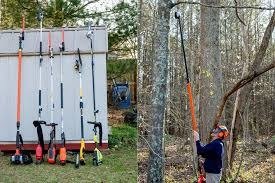Transporting oversized equipment can be a daunting task. From obtaining the right permits to maneuvering complex logistics, moving these behemoths requires specialized knowledge, meticulous planning, and adherence to legal requirements. Whether you’re relocating construction machinery, industrial equipment, or agricultural tools, a single misstep can result in delays, fines, or even accidents.
Planning & Preparation
Proper preparation is foundational to the success of moving oversized equipment. Rushing through this stage can lead to costly mistakes. Here’s what your planning phase should include:
Obtain the Necessary Permits
Before moving oversized equipment on public roads, you’ll need to acquire the right permits. Regulations vary between states and local jurisdictions, so it’s crucial to research and apply for the proper documentation. These permits typically outline parameters such as:
- Maximum allowable load dimensions.
- Approved travel routes.
- Time restrictions, such as avoiding rush hours.
Failure to secure the appropriate permits can result in hefty fines or halted shipments, so prioritize this step early in your planning process.
Conduct Route Surveys
Not every road can accommodate oversized loads. Conduct a thorough route survey to identify potential challenges, such as:
- Low-hanging bridges or power lines.
- Narrow roads or sharp turns.
- Weight-restricted bridges.
Optimizing your travel route not only minimizes risks but also reduces travel time and cost. Advanced GPS mapping tools or third-party routing services can be helpful during this phase.
Plan for Safety Measures
Ensuring safety is non-negotiable when transporting oversized equipment. Some key safety measures to consider include:
- Hiring pilot cars or escort vehicles to guide large loads.
- Equipping vehicles with appropriate warning signs, such as “Wide Load” banners and flashing lights.
- Providing clear communication systems between the driver and the escort team.
By prioritizing safety, you prevent accidents while complying with legal requirements.
Equipment & Techniques
Moving oversized equipment isn’t a job for standard trucks or ordinary tools. Specialized equipment and techniques are essential for handling these heavyweights efficiently and securely.
Use Specialized Trailers
One of the most commonly used pieces of equipment for oversized loads is the lowboy gooseneck trailer. This trailer is designed with a low deck height, allowing it to carry tall equipment safely under bridge clearance limits. Its detachable gooseneck also makes loading and unloading heavy machinery much easier.
Additionally, depending on the size and weight of your machinery, alternative trailers such as step decks or extendable trailers may also be required.
Utilize Rigging and Lifting Expertise
Loading and unloading oversized equipment is often the riskiest part of the process, requiring advanced rigging and lifting techniques to prevent accidents. Partnering with trained professionals who specialize in crane operations or hydraulic lifts is advisable. These experts ensure your equipment is loaded securely without causing damage.
Read Also: How Can You Identify a Well-Constructed Flat for Sale in Chennai’s New Developments?
Balance and Secure the Load
Proper weight distribution is essential during transportation. Always center the heaviest parts of the load, and use high-quality tie-downs, such as chains or heavy-duty straps, to secure the equipment. Improperly balanced loads can destabilize the trailer and increase the risk of tipping.
Regulations & Compliance
Compliance with legal and regulatory standards is a critical component of moving oversized loads. These rules are in place to ensure the safety of everyone on the road and to protect infrastructure.
Understand Federal and State Regulations
While federal regulations cover commercial vehicles, many rules governing oversized loads are laid out at the state level. This means you’ll need to account for differing requirements when crossing state lines. Common regulatory considerations include:
- Weight limits per axle.
- Height and width restrictions.
- Speed limits are specific to oversized loads.
Be sure to review the Department of Transportation (DOT) guidelines for each state involved in your route.
Secure Insurance Coverage
Transporting oversized equipment comes with risks, and ensuring adequate insurance coverage is essential. This includes coverage for:
- Freight damage.
- Public liability in case of accidents.
- Workers’ compensation for the transport crew.
Review your carrier’s insurance policy or purchase supplemental coverage to protect your investment.
Documentation and Compliance Checks
During transportation, your load may be subject to inspections by traffic authorities. Keep all required permits, safety documentation, and proof of insurance readily accessible. A failure to provide these can lead to delays or penalties.
Expert Tips for Smooth Transport
Here are some additional recommendations to make oversized equipment transportation as seamless as possible:
- Work with Experienced Carriers: Choose transportation companies with a proven track record in handling oversized loads. Their expertise can save you time and prevent costly mistakes.
- Schedule in Advance: Lead times for permits, equipment rentals, and coordination often require several weeks of preparation. Start planning as early as possible.
- Consider Weather Conditions: Inclement weather can delay transport or increase the risk of accidents. Check forecasts and plan accordingly to avoid disruptions.
Conclusion
Transporting oversized equipment can be complex, but with proper planning, the right tools, and expertise, it’s manageable. Securing permits, conducting route surveys, and following regulations ensure your machinery is moved safely and efficiently. These steps not only ensure successful delivery but also protect other road users and your team. Whether moving locally or across state lines, preparation and compliance are key to success.
You May Also like: 7 Trusted Options for Commercial Construction Success











